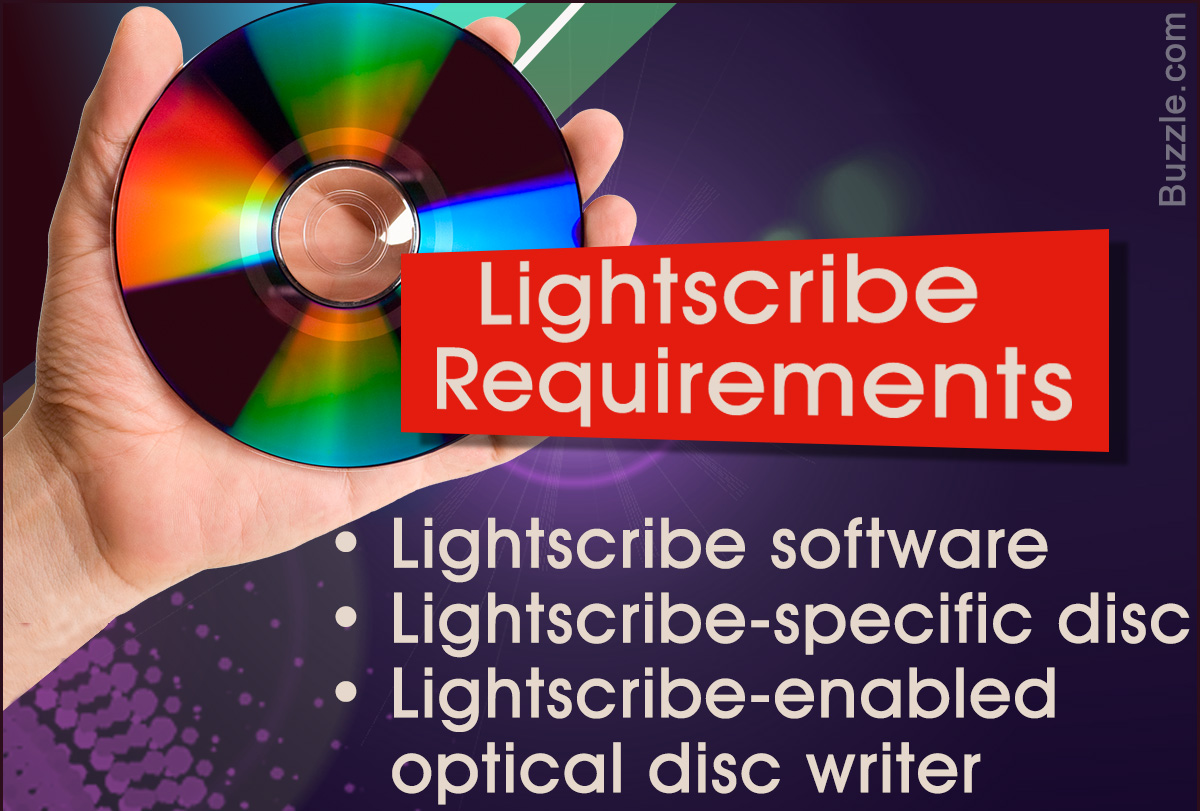
An innovative technology, Lightscribe has revolutionized the way CDs and DVDs are being written and labeled. This article will throw some light on what Lightscribe is, and how it is actually used. Once you are done reading this page, you will be in a position to custom-label your CDS and DVS by yourself.
Lightscribe needs a special disc drive, special media, and a software which allows the same drive to burn the disc as well as label it. It is an optical disc recording technology through which CDs and DVDs are labeled with text and graphics. This is an advancement to the conventional method of either using an adhesive sticker on the disc, or writing on it with a marker. The technology is all laser-driven, and no ink is used, which is why there is never any smudging or peeling of the image and text. Disc labeling was never so easy and presentable. It is the perfect way to create one’s own custom label.
At this moment, there is no technology to replace a Lightscribe label with a new design, though it is possible to add content to an old label that has already been burned. Every Lightscribe disc has a code at the center, so that the drive knows the exact rotational position of the disc. This facilitates in the disc being labeled at a high speed. This also allows multiple burns of the same label to come out darker and perfectly aligned.
Let’s have a look at what all is needed, the actual procedure, and some important dos and don’ts which would be very helpful.
Requirements for Lightscribe
- Hardware: An optical disc writer which is Lightscribe enabled.
- Application: A software that supports Lightscribe.
- Media: Discs which are Lightscribe-specific and have special coating.
How to Use It
Create your custom design or have it ready with you. Save the design as a bitmap, TIFF or JPEG file format. Insert the Lightscribe disc into the drive. All normal data like files, music, videos, images, etc., can be put onto these Lightscribe discs. Burn your data onto it just the same way as the procedure is for normal CD/DVD burning. After the data has been successfully burned, remove the disc from the drive and flip it over so that the non-glossy part faces downwards, actually touching the drive.
Now start the Lightscribe application, select your image or art and write in onto the disc. These discs are coated with a dye. The drive’s special laser chemically changes the dye on the disc which allows it to absorb the infra-red laser light. The whole process gets executed with laser precision. The laser scribes the image onto the spinning disc, which results in a high-resolution reproduction of the art or image onto the disc.
Under normal indoor light, the label will show no signs of deterioration or fading for at least 2 years or more. It is recommended to keep the disc in a protective case to keep it free from scratches. If proper care is taken for storage, the label will last the entire lifetime of the disc itself.
Useful Tips
- When updating the Lightscribe software online, make sure your browser pop-up feature has been enabled. Once the update/download is complete, you can disable it again.
- For those labels that include text only, use curved text, preferably the same curve as the disc. This helps in minimizing burn time.
- Always use the preview option in the application before printing the final label.
- Designs with more contrast print better and clearer on the discs.
- If you want to add something to the design later, burn the new design onto the same used disc. It will automatically get laser-aligned without any manual effort from your side.
- While using images, make sure the image is of the highest resolution possible. This will give a better quality label output.
- Burning it in title mode will be faster than in full mode.
Lightscribe discs need to be kept away from extreme heat, sunlight and humidity. Store them in a cool place, and in polypropylene disc sleeves rather than the PVC sleeves. Also, do not handle the disc after applying ointments and lotions onto your hands, as this will accelerate the deterioration of the image quality. These discs also should not be left in the drive for a long period of time. And lastly, they are unsuitable for frequently-used discs such as music CDs played in cars, etc.
Lightscribe has enabled us to burn and digitally label a disc all at the same time and with the same drive. Besides being faster and neater, it allows us to use our own images or custom-made art and transfer it onto the disc after the data has been burned. Now that you know how to use Lightscribe, go ahead and use this technology to neatly label your CDs and DVDs at home or at work too.